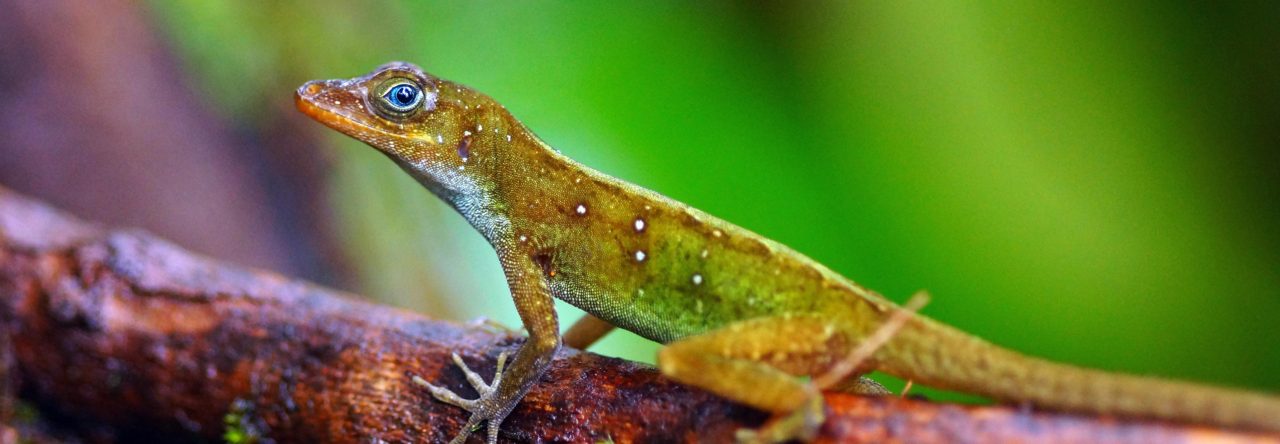We are all familiar with the great insights that lizards offer researchers working on evolution– and they’re also great teaching tools! Timna Brown and Jessie Dorman, two fantastic science teachers at New Albany High School in Ohio, developed a lizard-based activity to teach their students about the different mechanisms driving evolution. Brown has posted about this activity on Instagram, and I was lucky enough to get the details from her:
“Getting students excited to learn about complex scientific concepts is not always easy, but this evolution activity is robust, challenging, and brings the concepts of evolution to a level which students can understand and apply. We call it ‘Don’t be a Lazy Lizard!’

Students use straws, scoops and spoons to “feed” at different types of resource stations.
With the goal of helping students understand the complexities and misconceptions surrounding evolution, this simulation teaches students about a multitude of concepts. Focusing on the mechanisms of evolution, these topics include: natural selection, drift, inheritance, mutation effects on a population, predator-prey relationships, environmental pressures, ecological niches, speciation, meiosis, hybridization, reproductive and geographic isolation, genotype, phenotype, dominant, recessive, biomagnification, importance of energy to reproduction, and energy’s role in evolution. Each of these real-world factors are introduced to the students in a tangible way: for instance, a trait might be adaptive in one environment, but costly in another.
In this simulation, students act as lizards with different traits such as body coloration (brown and green) and mouth type (straw, spoon, scoopy) which play an integral part in their ecology, behavior, and interactions. Through dozens of generations, the students compete with one another for access to nectar (water) at a variety of feeding sources (trees, reservoirs, lakes, and troughs). As they try to survive and thrive in their environment, they ‘reproduce’ with one another and exchange genetic information, demonstrating the roles of genotypes, phenotypes, dominant traits, and recessive traits. As lizards in the simulation, they deal with changing food supplies, introduction of predators and food sources, and interspecific competition. With each passing generation, the phenotypic and genotypic frequencies change, and students are able to see populations change over time: EVOLUTION! Things can get pretty heated when these lizards compete, so don’t be a lazy lizard!

Once they were done with the simulation, students graphed their data to understand how populations change over time.
Following the activity, students work on applying the knowledge they gained by answering questions from real-life scenarios of evolution in nature. Taking the data from the simulation, students graph the changes of different phenotypes over time, and connect these changes to various selective pressures. They also work on Hardy-Weinberg problems to investigate how scientists track changes in genotype frequencies related to various traits. Students also develop storyboards to show how their understanding of evolution changed over time as they participated in a population subject to various selective pressures. This activity takes a week or so, but it’s very worthwhile and has been shown to help students understand the critical concepts of evolution.”

Timna Brown and Jessie Dorman, evolution educators extraordinaire.
Activity Adapted from Lazy Lizards, by Jessica Dorman. For the activity guide, contact Jessie Dorman (dorman.1@napls.us) or Timna Brown (brown.76@napls.us).



















































